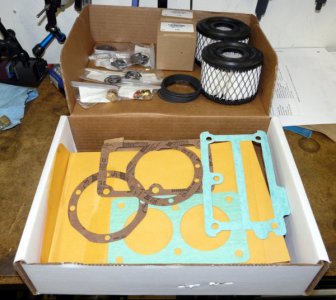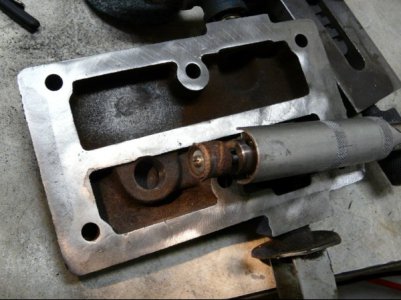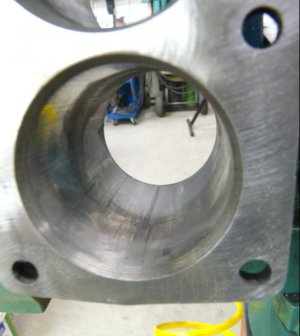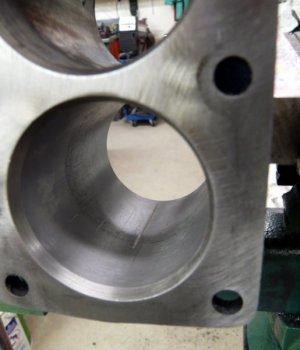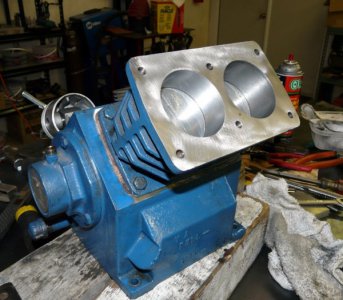It works! Finished it up a bit ago.
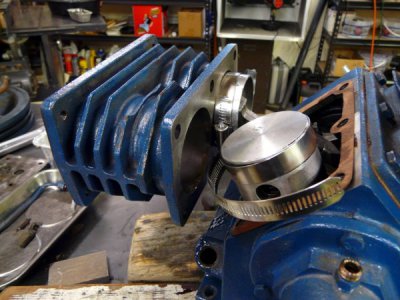
After that last cylinder block I wasn't about to try to get this one on just using a screwdriver for a ring compressor. I was close to putting tool holes in the walls yesterday. The hose clamps worked great. A regular ring compressor would have been too tall.
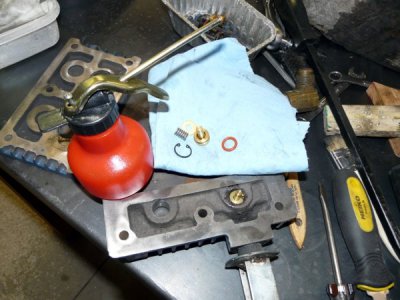
Installing the internal unloader valves. I think these are for running with a gas motor that does not shut off but just drops down to an idle when the tank pressure is reached. They bypass the incoming air, not the pressurized air. I honed the holes with a 3/8" rod cut down the center to hold a piece of emery cloth on a drill. (bottom of picture - the unloader valves are in the heads). Above the oil can is a valve block that houses 2 intake and 2 exhaust valves (the valves are a metal disk, a conical spring, a spring retainer and a snap ring).
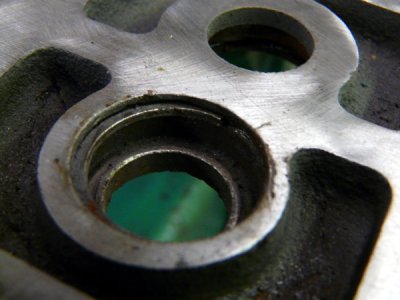
One of the 8 valve seats. Pitted a bit. This valve (and another just like it) had my blood pressure up near aneurysm pressures. Both ends of the snap ring are broken off. Couldn't get it out of the slot. Tried seal picks, needle nosed pliers, screwdrivers, etc. Finally just got P.O. ed and started wacking it with a hammer and chisel. Finally bent enough to get a seal pick under it.
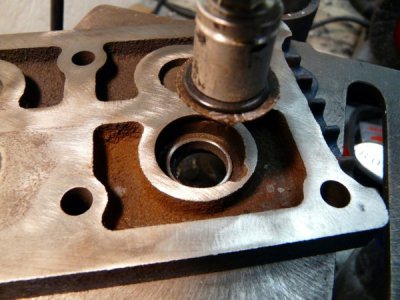
A HR 1" sanding disc with light pressure in the drill press was just right to "grind" or face the valve seats.
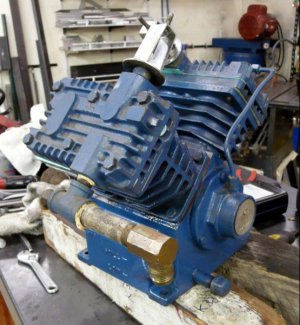
Pretty much together. I didn't replace the end cap gasket or the crank seal as they were not leaking and can be easily changed if/when needed.
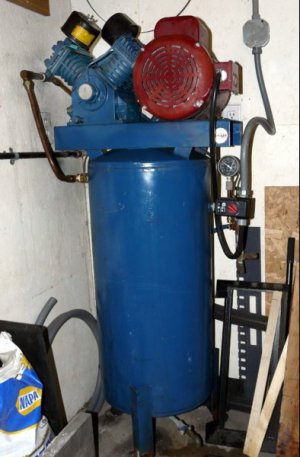
Like that little 3 HP Leeson motor? I don't know how old it is but if I ever need to replace it I can just sell the copper in the windings to pay for a new motor! I put new bearings in it last year. The sucker is heavy.
OK, now the important part. How good does it work?
I calculated 14.72 CFM @ 127 PSI. It might even get a little better as the rings seat (and some of the cylinder gouges get filled with crud!!).
I'm pretty happy with that. I sure don't have any air tools that need anywhere near that capacity. But I sure made a mess!


